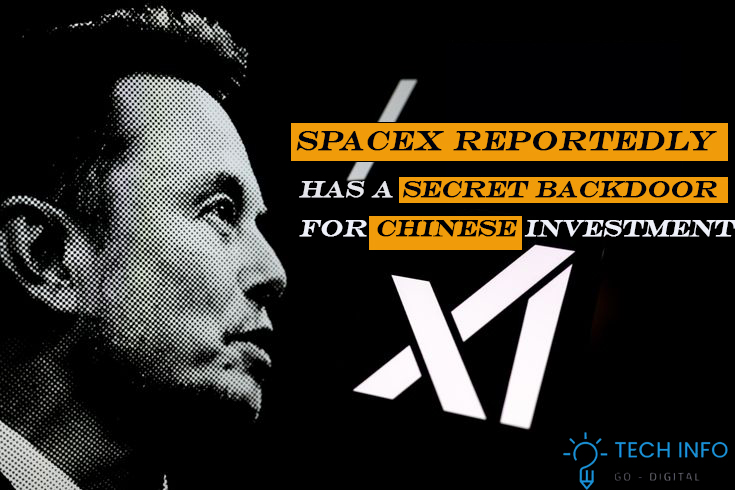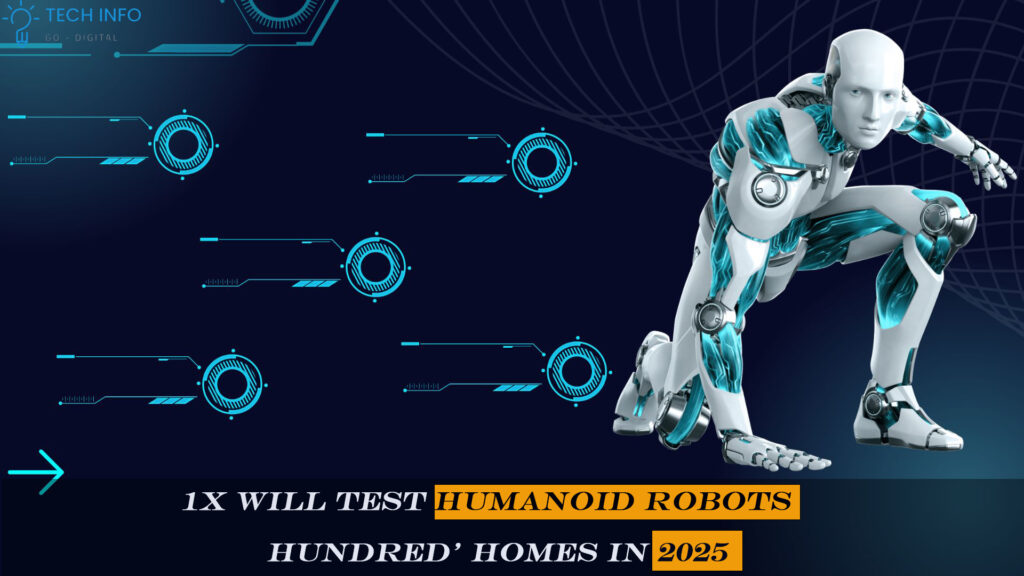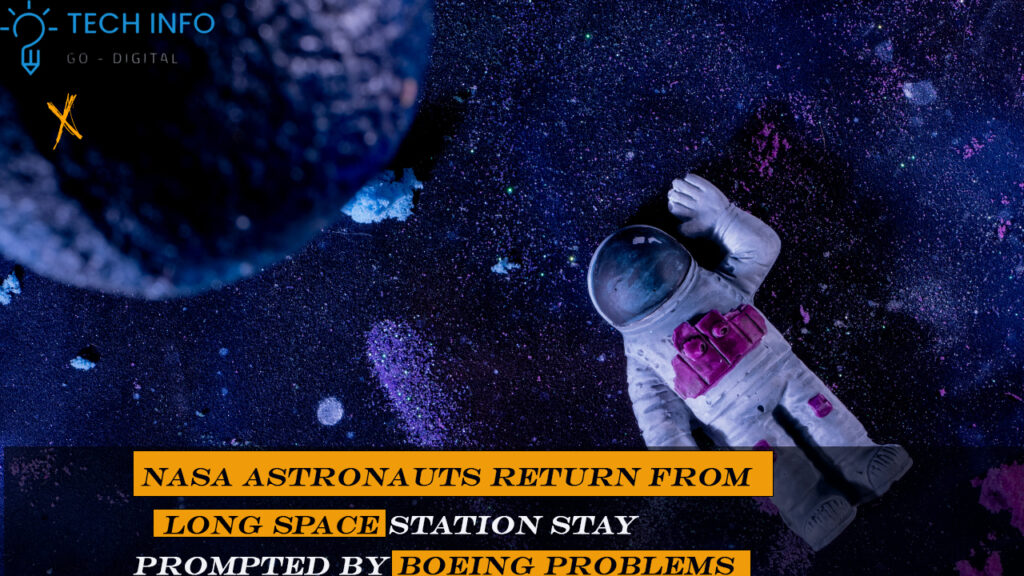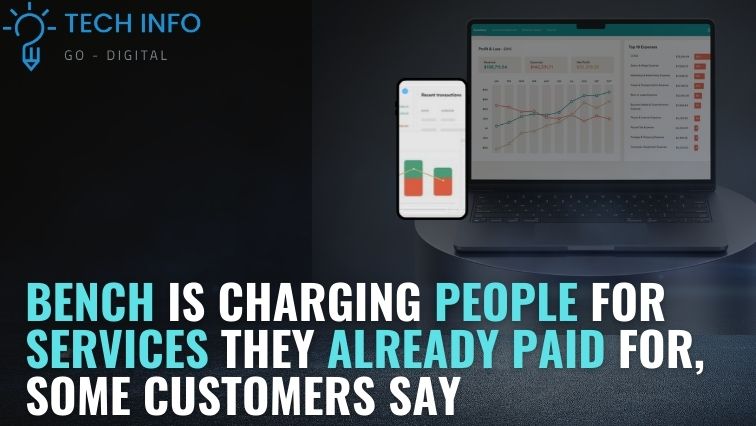SpaceX reportedly has a secret backdoor for Chinese investment

SpaceX and Allegations of a Secret Backdoor for Chinese Investment Introduction In the ever-evolving landscape of global finance and technological innovation, few names command as much attention as SpaceX. Founded by Elon Musk, SpaceX has revolutionized the aerospace industry with ambitious projects like reusable rockets, satellite internet through Starlink, and missions aimed at Mars colonization. However, recent reports have surfaced alleging that SpaceX has a secret backdoor allowing Chinese investment, raising concerns about national security, economic policy, and geopolitical competition. This blog explores these allegations, the mechanisms through which foreign investments might be channeled, the potential implications, and the broader impact on U.S.-China relations in the technological sphere. The Allegations: Is SpaceX Tied to Chinese Investors? Reports suggest that SpaceX has been indirectly receiving investments from Chinese entities through complex financial structures. These alleged investments have sparked concerns within the U.S. government and intelligence community, given SpaceX’s critical role in U.S. national security. The company has numerous contracts with agencies like NASA, the U.S. Air Force, and even the Pentagon, making any potential foreign influence a sensitive issue. How Could Chinese Investment Be Funneled Into SpaceX? Given that SpaceX is a private company, its ownership and investment structure differ from publicly traded companies. Unlike Tesla, which is openly traded and has clear records of institutional investors, SpaceX operates in a more restricted financial environment. However, private companies can still attract foreign capital through various means: Why Would China Want to Invest in SpaceX? China’s interest in SpaceX, if confirmed, would not be surprising given the strategic importance of aerospace technology. Some key reasons why Chinese investors might seek exposure to SpaceX include: National Security Concerns and U.S. Response If these allegations hold any weight, they could pose serious national security risks. The U.S. government has stringent regulations, such as the Committee on Foreign Investment in the United States (CFIUS), which reviews foreign investments for potential security threats. Potential Risks Involved: How the U.S. Might Respond Elon Musk’s Business Ties with China Elon Musk is no stranger to Chinese investment and partnerships. His company, Tesla, has extensive operations in China, including a Gigafactory in Shanghai and significant revenue from the Chinese market. This has led some analysts to speculate whether Musk’s openness to working with China extends beyond Tesla and into his other ventures, including SpaceX. While Musk has denied any direct Chinese involvement in SpaceX, his deep ties with China via Tesla could still raise concerns. Given China’s strategic interest in aerospace technology and Musk’s entrepreneurial reach, the intersection of these factors continues to fuel speculation. The Future of SpaceX’s Funding and Foreign Investment Policies Going forward, SpaceX may have to take a more cautious approach when accepting investments, particularly from international sources. Possible steps include: Conclusion The reports of a secret backdoor for Chinese investment in SpaceX highlight the complex and often opaque world of global finance in high-tech industries. While no definitive evidence has emerged proving direct Chinese control over SpaceX, the mechanisms through which foreign capital can enter U.S. firms remain a concern for policymakers and industry leaders. As SpaceX continues to push the boundaries of space exploration, ensuring that its funding sources align with U.S. national security interests will be critical. The intersection of technology, investment, and geopolitics will remain a defining challenge for companies like SpaceX, making transparency and regulatory oversight essential moving forward. In the coming years, the scrutiny surrounding foreign investments in U.S. tech firms will likely increase, and SpaceX’s response to these allegations could set an important precedent for other private companies operating in sensitive industries.
Google fixes Chrome zero-day security flaw used in hacking campaign targeting journalists

Google fixes Chrome zero-day security flaw used in hacking campaign targeting journalists Introduction In an era where digital security is paramount, tech giants like Google continuously work to patch vulnerabilities in their software. Recently, Google addressed a critical zero-day security flaw in its Chrome browser that was actively exploited in a hacking campaign targeting journalists. This incident highlights the growing risks faced by media professionals and the importance of timely software updates. In this blog post, we will explore: Understanding Zero-Day Vulnerabilities A zero-day vulnerability refers to a security flaw that is unknown to the software vendor but is being exploited by hackers. Since developers have “zero days” to fix the issue before attacks begin, these vulnerabilities are highly dangerous. Zero-day exploits are often used in targeted attacks against activists, government officials, and journalists—individuals who handle sensitive information. In this case, the Chrome flaw allowed attackers to execute malicious code on victims’ devices, potentially stealing data or installing spyware. Details of the Chrome Zero-Day Exploit Google’s Threat Analysis Group (TAG) identified the exploit, tracked as CVE-2023-5217, as a buffer overflow vulnerability in Chrome’s VP8 video codec. Attackers used crafted video files to trigger the flaw, leading to remote code execution (RCE) when users visited malicious websites. How the Attack Worked: This attack was part of a broader surveillance campaign, likely conducted by state-sponsored hackers aiming to silence or monitor journalists. Why Journalists Were Targeted ournalists often investigate sensitive topics, making them prime targets for cyberattacks. Hackers may seek to: Past campaigns, such as those involving Pegasus spyware, have shown how digital threats can undermine press freedom. Google’s Response and Patch Upon discovering the exploit, Google swiftly released an emergency update—Chrome version 116.0.5845.187—to patch the vulnerability. The company also: Users were urged to update Chrome immediately or enable auto-updates to stay protected. How to Protect Yourself from Zero-Day Attacks While software patches help, users must adopt proactive security measures: 1. Keep Software Updated 2. Use Advanced Security Features 3. Be Wary of Phishing Attempts 4. Use Strong Authentication 5. Monitor for Unusual Activity The Bigger Picture: Cybersecurity and Press Freedom This incident underscores the growing intersection between cybersecurity and human rights. Governments and tech companies must collaborate to: Organizations like the Committee to Protect Journalists (CPJ) and Access Now advocate for better protections for media workers in the digital space. The Vulnerability Explained The recently patched flaw (CVE-2023-5217) was a high-severity buffer overflow vulnerability in Chrome’s VP8 video codec implementation. This technical weakness allowed: Security researchers at Google’s Threat Analysis Group (TAG) discovered the flaw being actively exploited in the wild before a fix was available – the definition of a zero-day vulnerability. Protection Recommendations For Journalists & High-Risk Users For All Users The Bigger Threat Landscape This incident highlights several worrying trends: Cybersecurity experts warn that media professionals now require specialized protection similar to government officials What’s Next?
Jonah Peretti helped shaped digital media — can he do it again?

Jonah Peretti Helped Shaped Digital Media — Can He Do It Again? In the ever-evolving landscape of digital media, few names stand out as prominently as Jonah Peretti. As the co-founder of The Huffington Post and the founder of BuzzFeed, Peretti has been a driving force behind some of the most influential media platforms of the 21st century. His innovative approach to content creation, distribution, and monetization has reshaped how we consume news, entertainment, and information online. But as the digital media industry faces new challenges—ranging from algorithm changes to shifting consumer habits—many are wondering: Can Jonah Peretti reinvent the wheel once again? The Rise of a Digital Media Pioneer’ Jonah Peretti’s journey into the world of digital media began in the early 2000s, a time when the internet was still finding its footing as a mainstream medium. A graduate of MIT’s Media Lab, Peretti had a unique understanding of how technology and media could intersect to create something entirely new. His early experiments with viral content—such as the infamous Nike email exchange—demonstrated his knack for understanding what makes people click, share, and engage. In 2005, Peretti co-founded The Huffington Post with Arianna Huffington, Kenneth Lerer, and Andrew Breitbart. The platform quickly became a trailblazer in the digital news space, blending traditional journalism with user-generated content and a strong emphasis on social sharing. The Huffington Post was one of the first major outlets to recognize the power of SEO and social media in driving traffic, setting the stage for the modern era of digital publishing. But Peretti’s true magnum opus came in 2006, when he founded BuzzFeed. Initially conceived as a lab for viral content, BuzzFeed evolved into a media powerhouse, known for its listicles, quizzes, and cat videos, as well as its groundbreaking investigative journalism. Peretti’s vision was to create a media company that was native to the internet, one that understood the nuances of online behavior and leveraged them to build a massive audience. The BuzzFeed Blueprint At the heart of Peretti’s success with BuzzFeed was his ability to anticipate and adapt to the changing dynamics of the internet. He understood that the key to winning in the digital space was not just about producing great content, but also about understanding how that content would be discovered and shared. This led to the development of BuzzFeed’s data-driven approach to content creation, where analytics played a central role in shaping editorial decisions. Peretti also recognized the importance of platform diversification. While many traditional media companies were slow to embrace social media, BuzzFeed was an early adopter, building a presence on Facebook, Twitter, Instagram, and later, TikTok. This multi-platform strategy allowed BuzzFeed to reach audiences where they were, rather than relying solely on its own website for traffic. Another hallmark of Peretti’s approach was his willingness to experiment with new formats and business models. BuzzFeed News, for example, demonstrated that a digital-native outlet could produce award-winning journalism, while BuzzFeed’s e-commerce ventures, like Tasty, showed how media companies could monetize their content in innovative ways. Challenges in the Digital Media Landscape Despite his many successes, Peretti’s journey has not been without its challenges. The digital media industry is notoriously volatile, and even giants like BuzzFeed have struggled to navigate the shifting tides. The rise of platform algorithms, particularly Facebook’s frequent changes to its News Feed, has made it increasingly difficult for media companies to rely on social media for traffic. At the same time, the decline of traditional advertising revenue has forced many outlets to rethink their business models. BuzzFeed itself has faced its share of setbacks. In 2019, the company laid off 15% of its workforce, citing the need to streamline operations and focus on profitability. The COVID-19 pandemic further exacerbated these challenges, as advertisers slashed budgets and consumer behavior shifted dramatically. In 2021, BuzzFeed went public through a SPAC merger, but its stock performance has been underwhelming, reflecting broader skepticism about the sustainability of digital media businesses. Can Peretti Do It Again? Given these challenges, the question remains: Can Jonah Peretti reinvent digital media once again? The answer lies in his ability to adapt to the current landscape while staying true to his core principles of innovation and experimentation. One area where Peretti has already shown promise is in the realm of AI and technology. BuzzFeed has been an early adopter of AI tools, using them to generate content, personalize recommendations, and streamline operations. In 2023, BuzzFeed announced a partnership with OpenAI to integrate ChatGPT into its content creation process, signaling Peretti’s commitment to staying at the forefront of technological innovation. Another potential avenue for growth is the shift toward subscription-based models. While BuzzFeed has traditionally relied on advertising revenue, Peretti has expressed interest in exploring paid content offerings. This could include premium newsletters, exclusive video content, or membership programs that provide added value to loyal readers. Peretti’s track record also suggests that he is not afraid to pivot when necessary. Just as he transformed BuzzFeed from a viral content lab into a full-fledged media company, he could once again redefine what a digital media business looks like in the 2020s. This might involve deeper integration with emerging platforms, new forms of interactive content, or even ventures into entirely new industries. The Future of Digital Media The digital media landscape is more competitive and complex than ever before, but Jonah Peretti’s influence cannot be underestimated. His ability to anticipate trends, embrace new technologies, and connect with audiences on a deeply personal level has made him one of the most important figures in the industry. As he looks to the future, Peretti will need to balance the lessons of the past with the demands of the present. The challenges are significant, but so are the opportunities. With his unique blend of creativity, technical expertise, and entrepreneurial spirit, there is every reason to believe that Jonah Peretti can once again shape the future of digital media. In a world where change is the only constant, Peretti’s greatest strength may be his willingness to embrace uncertainty and turn it into opportunity. Whether through AI-driven content, innovative business models, or entirely new platforms, one thing is clear: Jonah Peretti is not done making waves in the digital
1X will test humanoid robots in ‘a few hundred’ homes in 2025

1X to Test Humanoid Robots in ‘A Few Hundred’ Homes in 2025: A New Era of Domestic Robotics The future of robotics is no longer a distant dream—it’s knocking on our doors. In a groundbreaking announcement, 1X, a leading robotics company, has revealed plans to test humanoid robots in “a few hundred” homes by 2025. This initiative marks a significant milestone in the integration of advanced robotics into everyday life, promising to transform how we live, work, and interact with technology. But what does this mean for society, and how will these humanoid robots impact our daily lives? Let’s explore this exciting development in detail. The Vision of 1X: Bringing Robots into Our Homes 1X, formerly known as Halodi Robotics, has been at the forefront of developing humanoid robots designed to assist humans in various tasks. Unlike traditional robots that are often confined to industrial or specialized environments, 1X’s robots are built to operate in human-centric spaces, such as homes, offices, and public areas. The company’s mission is to create robots that can seamlessly integrate into our lives, providing assistance, companionship, and support where needed. The decision to test these robots in real-world home environments is a bold and strategic move. By deploying humanoid robots in “a few hundred” households, 1X aims to gather valuable data on how these machines interact with humans, adapt to different living conditions, and perform everyday tasks. This real-world testing phase is crucial for refining the robots’ capabilities and ensuring they meet the needs of diverse users. What Can These Humanoid Robots Do? 1X’s humanoid robots are designed to be versatile and adaptable. While specific details about the models being tested in 2025 are still under wraps, the company has hinted at several key functionalities: The Technology Behind the Robots The success of 1X’s humanoid robots hinges on cutting-edge technology. Here are some of the key components that make these robots possible: The Benefits of Humanoid Robots in Homes The introduction of humanoid robots into households could bring numerous benefits: Challenges and Concerns While the potential benefits are immense, the deployment of humanoid robots in homes also raises several challenges and concerns: The Road Ahead The testing of humanoid robots in “a few hundred” homes in 2025 is just the beginning. If successful, this initiative could pave the way for widespread adoption of humanoid robots in the coming decades. However, achieving this vision will require addressing the challenges outlined above and ensuring that the technology is developed and deployed responsibly. 1X’s efforts are part of a broader trend in the robotics industry, with companies like Tesla, Boston Dynamics, and SoftBank also working on humanoid robots. As competition heats up, we can expect rapid advancements in the field, bringing us closer to a future where robots are an integral part of our daily lives. The announcement by 1X to test humanoid robots in homes by 2025 is a significant milestone in the evolution of robotics. These robots have the potential to transform our homes, making them more efficient, secure, and comfortable. However, as we embrace this exciting new technology, it is crucial to address the associated challenges and ensure that the benefits are accessible to all. The future of domestic robotics is no longer a distant dream—it is just around the corner. As we prepare to welcome humanoid robots into our homes, we must also prepare for the profound changes they will bring to our lives and society as a whole. The journey ahead is both thrilling and uncertain, but one thing is clear: the age of humanoid robots is upon us.
Meta AI is finally coming to the EU, but with limitations

Meta AI, the artificial intelligence division of Meta (formerly Facebook), has been making waves globally with its innovative advancements in AI technology. However, its expansion into the European Union (EU) has been met with both excitement and caution. After months of anticipation, Meta AI is finally making its way to the EU, but with certain limitations. This development marks a significant milestone in the tech industry, as it brings cutting-edge AI tools to one of the world’s most regulated markets. In this blog, we’ll explore what this means for users, businesses, and the broader AI landscape, while delving into the reasons behind the limitations and their potential implications. The Arrival of Meta AI in the EU: A Long-Awaited Move Meta AI has been at the forefront of AI research and development, creating tools and technologies that power everything from content moderation to augmented reality. Its AI models, such as those used in natural language processing and computer vision, have been integrated into Meta’s suite of products, including Facebook, Instagram, and WhatsApp. However, the EU has historically been cautious about adopting new technologies, especially when it comes to data privacy and ethical concerns. This has delayed Meta AI’s full-scale rollout in the region. The EU’s General Data Protection Regulation (GDPR) is one of the strictest data privacy laws in the world, and it has set a high bar for companies handling user data. Meta AI’s entry into the EU required careful navigation of these regulations to ensure compliance. After months of negotiations and adjustments, Meta has finally received the green light to introduce its AI technologies to EU users—albeit with some restrictions. The Limitations: What’s Different in the EU? While Meta AI’s arrival in the EU is a cause for celebration, it comes with notable limitations. These restrictions are primarily driven by the EU’s stringent data privacy laws and its commitment to ethical AI practices. Here are some of the key limitations: Implications for Users and Businesses The introduction of Meta AI in the EU, despite its limitations, is a significant development for both users and businesses. Here’s how it could impact different stakeholders: For Users: For Businesses: The Broader AI Landscape in the EU Meta AI’s entry into the EU is part of a larger trend of AI adoption in the region. The EU has been actively working to establish itself as a global leader in ethical AI, with initiatives like the AI Act, which aims to create a comprehensive regulatory framework for AI technologies. By setting high standards for transparency, fairness, and accountability, the EU is shaping the future of AI in a way that prioritizes human rights and societal well-being. However, the EU’s cautious approach also raises questions about its ability to compete with other regions, such as the United States and China, where AI development is often less constrained by regulation. While the EU’s focus on ethical AI is commendable, it could potentially slow down innovation and limit the region’s ability to attract top AI talent and investment. Looking Ahead: Balancing Innovation and Regulation The arrival of Meta AI in the EU represents a delicate balance between innovation and regulation. On one hand, it brings state-of-the-art AI technologies to a market that has been eager to embrace them. On the other hand, the limitations imposed by EU regulations highlight the challenges of developing AI in a highly regulated environment. As Meta AI continues to expand its presence in the EU, it will need to navigate these challenges carefully. This may involve investing in local infrastructure, collaborating with regulators, and adopting a more transparent and ethical approach to AI development. At the same time, the EU will need to ensure that its regulations strike the right balance between protecting users and fostering innovation. Ultimately, the success of Meta AI in the EU will depend on its ability to adapt to the region’s unique regulatory landscape while delivering value to users and businesses. By doing so, it can set a positive example for other tech companies and contribute to the development of a more ethical and responsible AI ecosystem. Conclusion Meta AI’s entry into the EU is a landmark moment that underscores the growing importance of AI in our daily lives. While the limitations imposed by EU regulations may pose challenges, they also reflect a commitment to ethical AI practices that prioritize user privacy and fairness. For users, this means access to advanced AI tools with greater transparency and control. For businesses, it presents both opportunities and challenges as they navigate the evolving regulatory landscape. As Meta AI continues to expand its reach, it will be fascinating to see how it adapts to the EU’s unique environment and contributes to the region’s AI ecosystem. One thing is clear: the intersection of AI and regulation will play a critical role in shaping the future of technology, not just in the EU, but around the world.
NASA astronauts return from long Space Station stay prompted by Boeing problems

NASA Astronauts Return from Extended Space Station Stay Prompted by Boeing Problems Space exploration is a field defined by its unpredictability. Despite meticulous planning and cutting-edge technology, challenges often arise that require quick thinking, adaptability, and resilience. This was recently exemplified by NASA astronauts who returned to Earth after an unexpectedly prolonged stay aboard the International Space Station (ISS). Their extended mission, caused by technical issues with Boeing’s Starliner spacecraft, underscores the complexities of human spaceflight and the importance of robust contingency planning. The Mission Context The astronauts were part of NASA’s Commercial Crew Program, a initiative designed to partner with private companies like Boeing and SpaceX to transport astronauts to and from the ISS. This program represents a shift in NASA’s approach to space travel, leveraging the innovation and efficiency of the private sector while maintaining the agency’s rigorous safety standards. The mission began as a routine expedition to the ISS, with the astronauts launching aboard a SpaceX Crew Dragon spacecraft. Their primary objectives included conducting scientific experiments, maintaining the ISS, and preparing for future missions. However, the return phase of their journey encountered unexpected hurdles due to issues with Boeing’s Starliner, which was initially slated to bring them back to Earth. Boeing’s Starliner Challenges Boeing’s Starliner spacecraft has faced a series of setbacks since its inception. Designed to be a reliable vehicle for transporting astronauts, the Starliner has encountered technical problems during both uncrewed and crewed test flights. These issues have ranged from software glitches to propulsion system anomalies, raising concerns about the spacecraft’s readiness for operational missions. In this particular instance, the Starliner was scheduled to dock with the ISS and return the astronauts to Earth. However, during pre-flight checks, engineers identified potential problems with the spacecraft’s thrusters and helium leaks. These issues posed significant risks, prompting NASA and Boeing to delay the mission and prioritize safety over expediency. The Decision to Extend the ISS Stay With the Starliner deemed unfit for the return journey, NASA had to make a critical decision. The agency could either attempt to resolve the issues quickly or extend the astronauts’ stay on the ISS until an alternative return vehicle was available. Given the potential dangers of rushing repairs, NASA opted for the latter, ensuring that the astronauts remained in the safe and familiar environment of the ISS. This decision underscored NASA’s commitment to safety and its ability to adapt to unforeseen circumstances. The ISS is equipped with ample supplies and resources to support astronauts for extended periods, making it an ideal fallback option in such situations. Additionally, the astronauts were trained to handle extended missions, allowing them to continue their work without significant disruption Life on the ISS During the Extended Stay For the astronauts, the extended stay meant more time to conduct experiments and contribute to the ongoing research aboard the ISS. The microgravity environment of the station provides unique opportunities for scientific discovery, particularly in fields like biology, physics, and materials science. The astronauts also played a crucial role in maintaining the station’s systems, ensuring that it remained operational for future crews. Despite the challenges, the astronauts maintained a positive outlook, viewing the extended stay as an opportunity to further their contributions to space exploration. They remained in constant communication with mission control, receiving updates on the Starliner’s status and participating in decision-making processes. The Return to Earth After several weeks of waiting, NASA and Boeing determined that the Starliner was not yet ready for a crewed return mission. As a result, the astronauts returned to Earth aboard a SpaceX Crew Dragon spacecraft, which had been prepared as a backup option. The successful landing marked the end of a mission that had been longer and more complex than originally planned. The return journey itself was a testament to the robustness of the Crew Dragon spacecraft and the expertise of the teams involved. The astronauts underwent standard post-flight medical evaluations and were reunited with their families, bringing a heartwarming conclusion to their extended adventure. Lessons Learned and the Future of Space Travel This incident serves as a reminder of the inherent risks and uncertainties of space exploration. While setbacks like these can be frustrating, they also provide valuable lessons for improving future missions. NASA and its partners are already working to address the issues with the Starliner, ensuring that it meets the high standards required for crewed spaceflight. Moreover, the incident highlights the importance of having multiple options for transporting astronauts to and from the ISS. The collaboration between NASA, SpaceX, and Boeing exemplifies the benefits of a diversified approach to space travel, where redundancy and flexibility are key to overcoming challenges. Conclusion The extended stay of NASA astronauts aboard the ISS, prompted by Boeing’s Starliner problems, is a story of resilience, adaptability, and the relentless pursuit of safety in space exploration. While the journey did not go as planned, it demonstrated the strength of the partnerships and systems that underpin human spaceflight. As we look to the future, these experiences will undoubtedly inform and inspire the next generation of missions, bringing us closer to unlocking the mysteries of the cosmos. In the end, the astronauts’ safe return is a testament to the dedication and ingenuity of everyone involved in the mission. Their extended stay may have been unexpected, but it also provided an opportunity to further our understanding of life in space and the challenges of long-duration missions. As we continue to push the boundaries of exploration, stories like these remind us of the importance of perseverance and the spirit of discovery that drives us forward.
Nvidia GTC 2025: What to expect from this year’s show

Nvidia GTC 2025: What to Expect from This Year’s Show The Nvidia GPU Technology Conference (GTC) has long been a cornerstone event for the tech industry, showcasing the latest advancements in artificial intelligence (AI), high-performance computing (HPC), graphics, and more. As we look ahead to Nvidia GTC 2025, the anticipation is palpable. The event promises to be a groundbreaking showcase of innovation, with Nvidia likely to unveil new hardware, software, and partnerships that could shape the future of technology. Here’s a deep dive into what we can expect from this year’s show. 1. Next-Generation GPU Architectures One of the most anticipated announcements at Nvidia GTC 2025 will undoubtedly be the unveiling of the next-generation GPU architecture. Following the success of the Ada Lovelace and Hopper architectures, Nvidia is expected to introduce a new architecture that pushes the boundaries of performance, efficiency, and scalability. Rumors suggest that this new architecture could focus on even greater AI acceleration, with specialized tensor cores and ray-tracing capabilities that redefine real-time rendering and machine learning workloads. The new GPUs are likely to target a wide range of applications, from gaming and content creation to data centers and autonomous vehicles. With the increasing demand for AI-driven solutions, Nvidia may also emphasize energy efficiency, ensuring that its GPUs can deliver unprecedented performance without compromising on sustainability. AI and Machine Learning Innovations AI has been at the heart of Nvidia’s strategy for years, and Nvidia GTC 2025 will likely highlight the company’s latest breakthroughs in this field. Expect to see new AI frameworks, tools, and libraries designed to simplify the development and deployment of AI models. Nvidia may also showcase advancements in generative AI, building on the success of platforms like ChatGPT and DALL-E, which have already demonstrated the transformative potential of AI in creative and analytical tasks. One area to watch is Nvidia’s focus on edge AI. As more industries adopt AI for real-time decision-making, Nvidia is expected to introduce hardware and software solutions optimized for edge computing. This could include compact, power-efficient GPUs and AI accelerators designed for use in smart cities, healthcare, and industrial automation. . Autonomous Vehicles and Robotics Nvidia’s DRIVE platform has been a game-changer for the automotive industry, enabling the development of autonomous vehicles with unparalleled computational power. At Nvidia GTC 2025, Nvidia is likely to announce the next iteration of its DRIVE platform, featuring enhanced AI capabilities, improved sensor fusion, and support for higher levels of autonomy. The company may also showcase partnerships with leading automakers and tech companies, highlighting real-world applications of its technology. In addition to autonomous vehicles, Nvidia is expected to make significant strides in robotics. The company’s Isaac robotics platform could see major updates, with new tools for simulation, training, and deployment of AI-driven robots. These advancements could accelerate the adoption of robotics in industries such as manufacturing, logistics, and healthcare. . Quantum Computing and HPC High-performance computing (HPC) has always been a key focus for Nvidia, and GTC 2025 is likely to feature groundbreaking developments in this area. With the growing interest in quantum computing, Nvidia may unveil new tools and frameworks that bridge the gap between classical and quantum computing. These tools could enable researchers and developers to harness the power of quantum algorithms while leveraging Nvidia’s GPU-accelerated infrastructure. Nvidia’s commitment to HPC is also evident in its work with supercomputers. The company may announce new partnerships with research institutions and governments to build next-generation supercomputers capable of tackling some of the world’s most complex challenges, from climate modeling to drug discovery. Gaming and Graphics While Nvidia’s focus has increasingly shifted toward AI and HPC, gaming remains a core part of its business. At Nvidia GTC 2025, Nvidia is expected to unveil new gaming GPUs that deliver stunning visuals, faster frame rates, and more immersive experiences. These GPUs could feature advanced ray-tracing and AI-driven upscaling technologies, further blurring the line between reality and virtual worlds. Nvidia may also provide updates on its Omniverse platform, which has gained traction as a collaborative tool for creators and developers. With new features and integrations, Omniverse could become an even more powerful platform for building and simulating virtual environments, from video games to digital twins. Sustainability and Green Computing As the tech industry grapples with the environmental impact of its operations, Nvidia is likely to emphasize sustainability at Nvidia GTC 2025. The company may announce initiatives to reduce the carbon footprint of its products, from energy-efficient GPUs to data center solutions that minimize power consumption. Nvidia could also highlight its work on AI-driven climate modeling, which could play a crucial role in addressing global environmental challenges. Expanding the Ecosystem Nvidia’s success is not just about hardware and software; it’s also about building a robust ecosystem of partners and developers. At GTC 2025, Nvidia is expected to announce new collaborations with tech giants, startups, and academic institutions. These partnerships could span a wide range of industries, from healthcare and finance to entertainment and education, further solidifying Nvidia’s position as a leader in the tech world. Keynotes and Thought Leadership As always, GTC 2025 will feature keynote speeches from Nvidia’s top executives, including CEO Jensen Huang. These keynotes are likely to provide a comprehensive overview of Nvidia’s vision for the future, highlighting the company’s latest innovations and their potential impact on society. Expect to hear about Nvidia’s role in shaping the metaverse, advancing AI ethics, and driving the next wave of digital transformation. Nvidia GTC 2025 is set to be one of the most exciting tech events of the year, showcasing groundbreaking advancements in AI, GPU technology, autonomous vehicles, quantum computing, and more. This blog explores what to expect from this year’s conference, including next-generation GPU architectures, AI and machine learning innovations, robotics, gaming, and sustainability initiatives. Dive into the future of technology as Nvidia unveils its latest hardware, software, and partnerships that will shape industries and redefine what’s possible. Whether you’re a developer, researcher, or tech enthusiast, Nvidia GTC 2025 is the event to watch for insights into the next wave of
Joby Aviation and Virgin Atlantic Partner to Launch Electric Air Taxis in the UK: A New Era of Sustainable Aviation

The future of urban mobility is taking flight, and it’s greener than ever. In a groundbreaking partnership, Joby Aviation and Virgin Atlantic have joined forces to bring electric air taxis to the United Kingdom. This collaboration marks a significant milestone in the evolution of sustainable aviation, promising to revolutionize how we travel in urban environments. With the UK aiming to achieve net-zero carbon emissions by 2050, this initiative couldn’t have come at a better time. Let’s dive into the details of this exciting partnership and explore how electric air taxis could transform the way we think about transportation. The Partnership: Joby Aviation and Virgin Atlantic Joby Aviation, a California-based company, has been at the forefront of developing electric vertical takeoff and landing (eVTOL) aircraft. Their innovative designs focus on creating quiet, efficient, and environmentally friendly air taxis that can seamlessly integrate into urban landscapes. On the other hand, Virgin Atlantic, a pioneer in the aviation industry, has long been committed to sustainability and innovation. Together, these two powerhouses are set to bring electric air taxis to the UK, offering a glimpse into the future of urban air mobility. The partnership aims to launch commercial air taxi services in the UK, with a focus on major cities like London. By leveraging Virgin Atlantic’s extensive network and expertise in customer experience, combined with Joby’s cutting-edge eVTOL technology, the duo is poised to create a seamless and sustainable transportation solution. What Are Electric Air Taxis? Electric air taxis, or eVTOLs, are aircraft designed to take off and land vertically, much like helicopters, but with the added benefits of being quieter, more energy-efficient, and environmentally friendly. These vehicles are powered by electric motors, which significantly reduce carbon emissions compared to traditional fossil fuel-powered aircraft. With the ability to carry a small number of passengers, electric air taxis are ideal for short-distance urban travel, offering a faster and more efficient alternative to ground transportation. Joby’s eVTOL aircraft, for instance, can travel up to 150 miles on a single charge and reach speeds of up to 200 mph. The aircraft is designed to be remarkably quiet, producing less noise than a typical conversation, making it well-suited for urban environments. This combination of speed, efficiency, and low noise levels makes electric air taxis an attractive option for commuters looking to avoid traffic congestion and reduce their carbon footprint. The Benefits of Electric Air Taxis Challenges and Considerations While the potential benefits of electric air taxis are undeniable, there are several challenges that need to be addressed before they can become a mainstream mode of transportation. The UK’s Role in the Future of Urban Air Mobility The UK has long been a leader in innovation and sustainability, making it an ideal location for the launch of electric air taxi services. With its commitment to achieving net-zero carbon emissions by 2050, the UK government has been actively supporting initiatives that promote clean energy and sustainable transportation. The partnership between Joby Aviation and Virgin Atlantic aligns perfectly with these goals, offering a tangible solution to reduce carbon emissions and improve urban mobility. London, in particular, is a prime candidate for the introduction of electric air taxis. As one of the world’s most congested cities, London stands to benefit greatly from a transportation solution that can bypass traffic and reduce travel times. Additionally, the city’s existing infrastructure, such as helipads and airports, could be repurposed to support air taxi operations, making the transition smoother. The Road Ahead The partnership between Joby Aviation and Virgin Atlantic is just the beginning of what promises to be a transformative era in urban air mobility. As technology continues to advance and regulatory frameworks are established, we can expect to see electric air taxis becoming an integral part of our transportation ecosystem. In the coming years, we may witness the emergence of a fully integrated urban air mobility network, where electric air taxis work in harmony with other forms of transportation to create a seamless and sustainable travel experience. This could include partnerships with ride-sharing services, public transportation systems, and even autonomous vehicles, further enhancing the convenience and efficiency of urban travel. Conclusion The collaboration between Joby Aviation and Virgin Atlantic to launch electric air taxis in the UK is a bold step towards a more sustainable and efficient future. By combining cutting-edge technology with a commitment to sustainability, this partnership has the potential to revolutionize urban mobility and set a new standard for transportation worldwide. As we look ahead, it’s clear that electric air taxis are more than just a futuristic concept—they are a tangible solution to some of the most pressing challenges facing our cities today. From reducing carbon emissions to alleviating traffic congestion, the benefits of electric air taxis are undeniable. While there are still hurdles to overcome, the progress made by Joby Aviation and Virgin Atlantic is a promising sign that the future of urban air mobility is within reach.
Bench is charging people for services they already paid for, some customers say

Bench is Charging People for Services They Already Paid For: What Customers Are Saying In recent months, , a popular online bookkeeping service, has come under fire from customers who claim they are being charged for services they already paid for. This issue has sparked outrage among small business owners and freelancers who rely on to manage their finances. In this blog, we’ll dive into the details of the controversy, explore what customers are saying, and discuss how this situation differs from other similar complaints found on Google. What is Bench? Bench is a cloud-based bookkeeping service designed to simplify financial management for small businesses and freelancers. The company offers monthly bookkeeping, tax preparation, and financial reporting services, all handled by a team of professional bookkeepers. has gained popularity for its user-friendly interface and promise to save time for business owners who may not have the expertise or resources to manage their own books. However, recent allegations suggest that may not be living up to its promises, with some customers accusing the company of double-charging or billing for services that were already included in their subscription plans. The Allegations: Charging for Services Already Paid For Several customers have taken to social media, review platforms, and forums to voice their frustrations with. The primary complaint is that Bench is charging them for services that were supposed to be included in their monthly subscription fees. Here are some of the most common grievances: What Customers Are Saying The backlash against Bench has been significant, with many customers expressing their dissatisfaction online What Bench Can Do to Address the Issue To regain customer trust and address the allegations, Bench needs to take proactive steps. Here are a few suggestions: Conclusion The allegations against are a reminder of the importance of transparency and customer service in the financial services industry. While Bench has been a popular choice for small business owners and freelancers, the recent backlash highlights the need for the company to address its billing practices and improve its customer support. For now, customers are advised to carefully review their invoices and reach out to support team if they notice any discrepancies. As the situation unfolds, it remains to be seen how will respond and whether it can regain the trust of its users. If you’ve had a similar experience with or another bookkeeping service, share your story in the comments below. Your feedback can help others make informed decisions about the services they choose for their businesses.
9 US AI startups have raised $100M or more in 2025

The Rise of AI Titans: 9 US Startups That Raised $100M+ in 2025 The year 2025 marked a pivotal moment in the evolution of artificial intelligence 9 US AI startups As the technology matured and its applications expanded across industries, venture capital flowed into the sector like never before. Among the most notable trends was the emergence of nine US-based AI startups that each raised $100 million or more in funding. These companies are not just reshaping industries—they are redefining how we interact with technology, solve global challenges, and envision the future. In this blog, we’ll dive into the stories behind these nine AI startups, exploring their innovations, the problems they’re solving, and why investors are betting big on their success. From healthcare to climate tech, these companies are pushing the boundaries of what\ can achieve. 1. NeuroGenix: Revolutionizing Brain-Computer Interfaces Funding Raised: $120MHeadquarters: San Francisco, CA NeuroGenix is at the forefront of brain-computer interface (BCI) technology. Their flagship product, MindLink, is a non-invasive neural interface that allows users to control devices, communicate, and even restore lost motor functions using only their thoughts. In 2025, NeuroGenix secured $120 million in Series B funding, led by a consortium of tech and healthcare investors. The company’s technology has shown promise in clinical trials, particularly for patients with paralysis or neurodegenerative diseases like ALS. Why It Matters: NeuroGenix is bridging the gap between humans and machines, offering hope to millions of people with disabilities while paving the way for a future where mind-controlled technology is mainstream. 2. Tackling Climate Change with AI-Powered Solutions Funding Raised: $150MHeadquarters: Boston, MA EcoAI is on a mission to combat climate change using advanced AI algorithms. Their platform analyzes vast amounts of environmental data to optimize energy consumption, reduce carbon emissions, and predict natural disasters with unprecedented accuracy. In 2025, EcoAI raised $150 million in a Series C round, with significant contributions from climate-focused funds and tech giants. The company’s technology is already being used by governments and corporations to meet sustainability goals. Why It Matters: As the climate crisis intensifies, EcoAI’s innovative approach offers a scalable solution to one of the most pressing challenges of our time. 3. MediSynth: Transforming Drug Discovery with AI Funding Raised: $110MHeadquarters: Cambridge, MA MediSynth is revolutionizing the pharmaceutical industry by using AI to accelerate drug discovery. Their platform, SynthAI, can predict the efficacy and safety of new compounds in a fraction of the time and cost of traditional methods. In 2025, the company raised $110 million in Series A funding, attracting interest from both biotech and tech investors. MediSynth’s technology has already led to the discovery of several promising drug candidates for rare diseases. Why It Matters: By speeding up the drug discovery process, MediSynth is bringing life-saving treatments to patients faster and at a lower cost. 4. QuantumLeap: Pioneering Quantum Machine Learning Funding Raised: $130MHeadquarters: Palo Alto, CA QuantumLeap is merging quantum computing with machine learning to solve problems that are currently beyond the reach of classical computers. Their quantum AI startups platform is being used in fields like cryptography, materials science, and financial modeling. In 2025, the company raised $130 million in a Series B round, with backing from leading venture capital firms and tech conglomerates. QuantumLeap’s technology is still in its early stages, but its potential is staggering. Why It Matters: QuantumLeap is pushing the boundaries of computation, opening up new possibilities for innovation across industries. 5. AgriGrow: Revolutionizing Agriculture with AI Funding Raised: $100MHeadquarters: Austin, TX AgriGrow is using to transform the agriculture industry. Their platform, CropMind, analyzes soil data, weather patterns, and crop health to help farmers optimize yields and reduce waste. In 2025, AgriGrow raised $100 million in Series A funding, with support from agtech and sustainability-focused investors. The company’s technology is already being used by farmers across the US AI startups to increase productivity and profitability. Why It Matters: AgriGrow is addressing the global food crisis by making agriculture more efficient and sustainable. Funding Raised: $100MHeadquarters: Austin, TX AgriGrow is using to transform the agriculture industry. Their platform, CropMind, analyzes soil data, weather patterns, and crop health to help farmers optimize yields and reduce waste. In 2025, AgriGrow raised $100 million in Series A funding, with support from agtech and sustainability-focused investors. The company’s technology is already being used by farmers across the US AI startups to increase productivity and profitability. 6. SafeNet AI: Reinventing Cybersecurity Funding Raised: $140MHeadquarters: New York, NY SafeNet AI is leveraging to combat cyber threats in real time. Their platform, ThreatShield, uses machine learning to detect and neutralize cyberattacks before they can cause damage. In 2025, the company raised $140 million in Series C funding, with participation from cybersecurity and tech investors. SafeNet AI’s technology is being adopted by Fortune 500 companies and government agencies. Why It Matters: As cyber threats become more sophisticated, SafeNet AI’s proactive approach is essential for protecting sensitive data and infrastructure. 7.Personalizing Education with AI Funding Raised: $105MHeadquarters: Seattle, WA EduAI is transforming education with its AI-powered learning platform. The platform adapts to each student’s unique learning style, providing personalized lessons and real-time feedback. In 2025, EduAI raised $105 million in Series B funding, with backing from edtech and venture capital firms. The company’s technology is being used in schools and universities across the US to improve student outcomes. Why It Matters: EduAI is making education more accessible and effective, helping students reach their full potential. 8. RoboWorks: Advancing Robotics Funding Raised: $125MHeadquarters: Pittsburgh, PA RoboWorks is developing AI-powered robots for a wide range of applications, from manufacturing to healthcare. Their robots are designed to work alongside humans, enhancing productivity and safety. In 2025, the company raised $125 million in Series A funding, with support from robotics and industrial investors. RoboWorks’ robots are already being used in factories and hospitals across the country. Why It Matters: RoboWorks is ushering in a new era of human-robot collaboration, transforming industries and improving quality of life. 9. FinAI: Disrupting Financial Services with AI Funding Raised: $115MHeadquarters: Chicago, IL FinAI is using to revolutionize financial services. Their platform, WealthMind, provides personalized financial advice, automates investment strategies, and detects fraudulent activity. In 2025, the company raised $115 million in Series B funding, with participation

